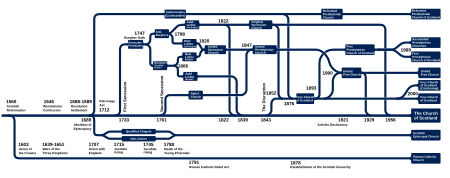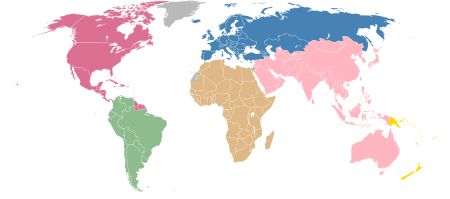Secondary flow
|
Read other articles:

У этого термина существуют и другие значения, см. Министерство культуры. Эмблема Министерства культуры и массовых коммуникаций Министерство культуры и массовых коммуникаций Российской Федерации — федеральное министерство в 2004—2008 гг., осуществлявшее функции по вы�…
2020年夏季奥林匹克运动会波兰代表團波兰国旗IOC編碼POLNOC波蘭奧林匹克委員會網站olimpijski.pl(英文)(波兰文)2020年夏季奥林匹克运动会(東京)2021年7月23日至8月8日(受2019冠状病毒病疫情影响推迟,但仍保留原定名称)運動員206參賽項目24个大项旗手开幕式:帕维尔·科热尼奥夫斯基(游泳)和马娅·沃什乔夫斯卡(自行车)[1]闭幕式:卡罗利娜·纳亚(皮划艇)[2…

Election 1958 Swedish general election ← 1956 1 June 1958 1960 → All 231 seats in the Andra kammaren of the Riksdag116 seats needed for a majority First party Second party Third party Leader Tage Erlander Jarl Hjalmarson Bertil Ohlin Party Social Democrats Right People's Party Last election 106 42 58 Seats won 111 45 38 Seat change 5 3 20 Popular vote 1,776,667 750,332 700,019 Percentage 46.22% 19.52% 18.21% Fourth party Fifth party …

U.S. House districts in the state of Virginia Virginia's congressional districts in effect since the 2022 elections Virginia is currently divided into 11 congressional districts, each represented by a member of the United States House of Representatives. The death of Rep. Donald McEachin on November 28, 2022, left the 4th congressional district seat empty.[1][2] Following the results of a special election to fill his seat on February 21, 2023, Jennifer McClellan made history by b…

Universitas Islam Negeri Sumatera Utara (disingkat: UINSU) adalah Perguruan Tinggi Keagamaan Islam Negeri yang berada di Medan, Sumatera Utara, Indonesia. UINSU awalnya berdiri dengan nama Institut Agama Islam Negeri (IAIN SU) pada tahun 1973. Kemudian alih status IAIN SU menjadi Universitas Islam Negeri (UIN) Sumatera Utara telah disetujui dengan Perpres No. 131/2014 tanggal 16 Oktober 2014 oleh Presiden ke-6 Indonesia Susilo Bambang Yudhoyono.[1] Universitas Islam NegeriSumatera UtaraJ…

Quorum of ten Jewish adults for certain religious obligations This article is about the term used in Judaism. For other uses, see Minyan (disambiguation). MinyanHalakhic texts relating to this articleTorah:Leviticus 22:32Mishnah:Megillah 4:3Babylonian Talmud:Megillah 23b; Sanhedrin 74bJerusalem Talmud:Megillah 4:4Mishneh Torah:Hilchot Tefillah 8:1Shulchan Aruch:Orach Chayim 55 Part of a series onJews and Judaism Etymology Who is a Jew? Religion God in Judaism (names) Principles of faith Mit…

Not to be confused with United Secession Church. Timeline showing the evolution of the churches of Scotland from 1560 The Original Secession Church or United Original Secession Church was a Scottish Presbyterian denomination formed in 1827 by the union of (1) the Anti-Burgher Old Lights, led by Thomas M'Crie the Elder and known as the Constitutional Associate Presbytery and (2) the portion of the Anti-Burgher New Lights that refused to merge with the Burgher New Lights, led by George Paxton and …

Former sports governing body organizing association football in the Soviet Union Football Federation of the USSRUEFAFounded27 December 1934Folded25 December 1991HeadquartersMoscow, Russian SFSRFIFA affiliation1946–1991UEFA affiliation1954 (since 1992 as the Russian Football Union)President(see chairmen list below) The Football Federation of the USSR (Russian: Федерация футбола СССР) was a governing body of football in the Soviet Union and since 1972 the main governing body …

Óscar Andrés Rodríguez Maradiaga Cardenal presbítero de Santa María de la Esperanza Arzobispo de Tegucigalpa 8 de enero de 1993 - 26 de enero de 2023Predecesor Héctor Enrique Santos Hernández, S.D.B.Sucesor José Vicente Nácher Tatay, C.M. religiosoInformación religiosaOrdenación sacerdotal 28 de junio de 1970 por monseñor Girolamo PrigioneOrdenación episcopal 8 de diciembre de 1978 por monseñor Gabriel Montalvo HigueraProclamación cardenalicia 21 de febrero de 2001 por Juan Pablo …

مجاهدو البوسنة البلد جمهورية البوسنة والهرسك المقر الرئيسي البوسنة والهرسك تعديل مصدري - تعديل مجاهدو البوسنة (بالبوسنوية: Bosanski mudžahedini) هم متطوعون أجانب مسلمون قاتلوا في البوسنة خلال فترة 1992–1995 في حرب البوسنة. كان وصولهم الأول إلى وسط البوسنة في النصف الثان�…

يفتقر محتوى هذه المقالة إلى الاستشهاد بمصادر. فضلاً، ساهم في تطوير هذه المقالة من خلال إضافة مصادر موثوق بها. أي معلومات غير موثقة يمكن التشكيك بها وإزالتها. (نوفمبر 2019) الرابطة الجزائرية المحترفة الأولى 1995-1996 تفاصيل الموسم الرابطة الجزائرية المحترفة الأولى البلد الجزائ�…

This article needs additional citations for verification. Please help improve this article by adding citations to reliable sources. Unsourced material may be challenged and removed.Find sources: USS Hillsborough County – news · newspapers · books · scholar · JSTOR (March 2019) (Learn how and when to remove this message) History United States NameUSS LST-827 BuilderMissouri Valley Bridge & Iron Company, Evansville, Indiana Laid down13 October 1944 Laun…

Voclosporin Names Systematic IUPAC name (3S,6S,9S,12R,15S,18S,21S,24S,30S,33S)-30-Ethyl-33-[(1R,2R,4E)-1-hydroxy-2-methylhepta-4,6-dien-1-yl]-1,4,7,10,12,15,19,25,28-nonamethyl-6,9,18,24-tetrakis(2-methylpropyl)-3,21-di(propan-2-yl)-1,4,7,10,13,16,19,22,25,28,31-undecaazacyclotritriacontane-2,5,8,11,14,17,20,23,26,29,32-undecone Other names VCS, ISA247, Luveniq Identifiers CAS Number 515814-01-4 Y 3D model (JSmol) Interactive image ChemSpider 5293683 ECHA InfoCard 100.357.472 PubChem CID 69…

American impresario, theatrical showman and lyricist For the Canadian curler, see Billy Rose (curler). This article needs additional citations for verification. Please help improve this article by adding citations to reliable sources. Unsourced material may be challenged and removed.Find sources: Billy Rose – news · newspapers · books · scholar · JSTOR (June 2024) (Learn how and when to remove this message) Billy RoseRose in 1948BornWilliam Samuel Rosenbe…

Сона́тна фо́рма — музична форма, що складається з трьох основних розділів: Експозиція — де протиставляються головна й побічна теми; Розробка — де ці теми розвиваються; Реприза — де повторюється експозиція з тональними (і, можливо, іншими) змінами. Зміст 1 Загаль…

American basketball player (born 1975) Tina ThompsonThompson at the 2013 WNBA All-Star gamePersonal informationBorn (1975-02-10) February 10, 1975 (age 49)Los Angeles, California, U.S.Listed height6 ft 2 in (1.88 m)Listed weight178 lb (81 kg)Career informationHigh schoolMorningside(Inglewood, California)CollegeUSC (1993–1997)WNBA draft1997: 1st round, 1st overall pickSelected by the Houston CometsPlaying career1997–2014PositionSmall forward / power forwardNumber…

Shalin BhanotLahir15 November 1983 (umur 40)[1]Jabalpur, Madhya Pradesh, IndiaPekerjaanAktorTahun aktif2004–sekarangSuami/istriDalljiet Kaur (m. 2009; c. 2015)Anak1 Shalin Bhanot (lahir 15 November 1983) adalah aktor televisi India. Dia berpartisipasi dalam acara realitas tari Nach Baliye 4 dan muncul sebagai pemenang bersama mantan istrinya Dalljiet Kaur. Dia kemudian berpartisipasi dalam acara realitas Bigg Boss 16 di mana…

Battle of GerontasPart of the Greek War of IndependencePlan of the battleDate10 September [O.S. 29 August] 1824Locationoff Leros, Aegean Sea37°12′7″N 27°10′12″E / 37.20194°N 27.17000°E / 37.20194; 27.17000Result Greek victory Control of Samos securedBelligerents First Hellenic Republic Ottoman EmpireCommanders and leaders Andreas MiaoulisDimitrios Papanikolis Koca Hüsrev Mehmed PashaStrength 70-75 warships (of them 9 fireships)800 cann…

Micronesian language PingelapeseNative toMicronesiaRegionPingelapNative speakers(2,500 cited 1991)[1]All users: 4,500Language familyAustronesian Malayo-PolynesianOceanicMicronesianNuclear MicronesianChuukic–PohnpeicPohnpeicPingelapeseWriting systemLatin scriptLanguage codesISO 639-3pifGlottologping1243ELPPingelapese Pingelapese is classified as Severely Endangered by the UNESCO Atlas of the World's Languages in Danger The Pingelapese language is a Micronesian language native to Pi…

Greek mythological figure For the ancient Greek city, see Helike. For the moon of Jupiter, see Helike (moon).Greek deitiesseries Primordial deities Titans and Olympians Water deities Chthonic deities Personified concepts Nymphs Alseid Anthousai Auloniad Aurae Crinaeae Daphnaie Dryads Eleionomae Epimeliads Hamadryads Hesperides Hyades Lampads Leimakids Leuce Limnades Meliae Melinoë Minthe Naiads Napaeae Nephele Nereids Oceanids Oreads Pegaeae Pegasides Pleiades Potamides Semystra Thriae vte In G…




